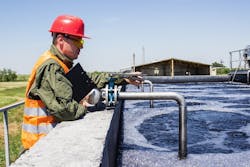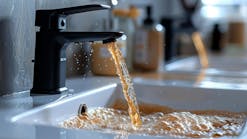When it comes to treating potable water, few places are as diverse as Southern California. The region runs the gamut from cities like Los Angeles (with one of the largest water treatment plants on the planet), to hundreds of small municipalities, Native American reservations, self-sufficient military bases and smaller towns that draw water from local wells.
No two end users are the same. Water treatment processes that work in big cities are not always appropriate for rural areas, because each water source is different, and they change annually based on rain-fall or the lack thereof. Areas near dairy farms see higher concentrations of nitrates, while places near mines or shale wells contain a wide array of contaminants. When each water source is different, extensive testing, analysis and customized treatment solutions are required.
It is not just the diversity of the source water that defines system requirements; many customers are one-man operations, facing budget constraints that larger operators do not have to deal with. Typically, the “buyer” for smaller water treatment systems is not a “pump guy.” Rather, he or she is also the mayor, city manager, Native American chief, or the ranking officer on a military base who is forced to wear many hats. These buyers do not have a lot of time for water treatment issues. More times than not, the incentive to modernize pumping equipment comes from regulators or pending audits.
In rural areas of Southern California, regulators also face time and geographical constraints. Remote wells are not checked as frequently as larger water sources, because many of them are eight- to 10-hour drives from major population centers. Some smaller water treatment facilities are self-governed. When this is the case, preventative maintenance often gives way to reactionary maintenance, and pumping equipment, which might have been installed 10 years earlier by someone who no longer works there often is forced to run “as is” for long periods of time.
The equipment suppliers that serve these diverse customers must be jacks-of-all-trades. They must be listening consultants, water doctors, fabricators, analytics gurus—and they must also act as brokers to introduce operators to chemical suppliers and maintenance technicians that can keep these systems operating on a 24/7 basis.
Small systems operators generally look for full sytems with components that meet their needs, including pumps, flowmeters, mixers, separators, chemical tanks and piping systems.
Complete Systems
When the time comes for pump replacement or upgrades, the relationship between supplier and end user is paramount. Unlike large water treatment plants, smaller buyers do not spec products through engineering and procurement contractors (EPCs), and they rarely have the time to solicit multiple bids. Instead, they rely on distributors they know who can sell and install full solutions that include everything they need. These full solutions include metering pumps, analytics flow meters, mixers, separators, chemical tanks and piping systems.
Beyond the application knowledge, equipment distributors must know the landscape, in order to effectively analyze source water, and identify treatment options. They should either possess the chemistry expertise or work hand-in-hand with chemical suppliers to address the operator’s needs. This collaboration must be seamless to the end user, because they rarely have the bandwidth to manage multiple vendors.
One company that has carved out a niche addressing small-system water treatment needs is J.L. Wingert Co. Since 1964, this Garden Grove, Calif.-based supplier has worked with hundreds of customers in rural areas, providing pretreatment systems to filter turbid water, hypochlorination solutions for disinfection, flocculation applications to remove suspended solids, and an array of pH adjustments as part of its solutions portfolio. Distributors like Wingert offer full scale testing and analysis equipment, as well as design, fabrication and implementation services that are needed for small-scale water treatment applications in rural environments.
Experience gained over 50 years has shown that reliability starts in the design phase. Choosing pumps where the liquid end and the diaphragm can be repaired quickly or swapped out easily helps minimize maintenance requirements down the road.
Parts availability is another critical factor. Because maintenance tends to be reactionary for many smaller operators, the majority of support calls happen when the pump stops working. The operator, mayor, Native American chief or city planner does not know—or care—why the pump stopped. They just need it fixed immediately. The best way to accomplish this is to ensure that spare parts are on hand and that replacement pumps are in stock to eliminate delays and lead time that comes with procuring custom-built pumps from original manufacturers.
Selecting a Solution
Metering pumps from manufacturers like LMI are a solution for these types of small-scale systems in rural areas. Wingert has deployed hundreds of them in hot, extreme outdoor environments, and many have operated reliably for more than 10 years in those conditions.
Many of the water disinfection applications in these rural environments rely on harsh chemicals like sodium hypochlorite, which can turn to gas at higher temperatures. LMI metering pumps used for these applications feature AutoPrime liquid ends that can handle such chemicals without compressing the gas. By selecting the right equipment up front, operators can save on maintenance and minimize unplanned downtime.
Pump accuracy, and turndown controls also are important factors for smaller operators. Each cost impacts the bottom line and chemical costs typically are one of the largest expenses. Some plants waste chemicals through over-injection. This not only wastes money, but it also hinders efficiency for applications like pH balancing. Injecting too much acid or caustic in one stage of the process requires corrections through additional dosing later in the process. But systems with monitoring and analytics capabilities, combined with metering pumps that can deliver 1,000-to-1 turndown capabilities can help operators save money by ensuring that they do not waste chemicals.
Reliable Reach
Remote monitoring solutions are reaching a maturity point, where they are becoming more affordable, and more widely adopted—particularly by smaller-scale operators. Any technology that enables plants to do more with less takes on added value for smaller operators, because they do not have the staff or the attention to physically monitor pumps and chemical injection rates.
Wingert has developed its own remote monitoring solution that can alert operators to pump issues or injection failures. Like many Industrial Internet of Things solutions, Wingert has assembled the sensors, gateways, and networking connectivity from third party providers, and it has written its own software and dashboard applications for customers. These apps not only help smaller operators save on chemical costs, but they also deliver peace of mind, which can be priceless for small plant operators who have many other responsibilities and priorities.
Peace of Mind
Even though budgets for small-scale operators will always be a constraint, the good news is that the best practices are well understood, the common pitfalls are identified, and pumping and monitoring equipment exists that is specifically tailored to the needs of smaller plants.
The awareness of best practices and the lessons learned over the last several decades have helped solutions providers like Wingert counsel operators. This expertise helps smaller plants avoid mistakes. It enables them to minimize maintenance requirements by deploying proven pumping equipment. The monitoring technology helps small-scale operators sleep at night, knowing their water treatment processes are operating as planned.



